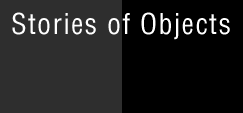


Interview of Françoise Darmon
Today, Stories of Objects, is a "historical" collection
of five documentary films about design, bringing together the best international
architect designers. The objective of these films is to reveal to the
public the social and cultural dimensions of the objects around us.
The Design we are talking about is a reflection about today's world.
It reflects our cultural identities, it reflects our lifestyles.
In my approach to Sense in Utility, it was essential to concentrate
on the creative process and the object. The making of the film is itself
a creative act; we use black and white for the designers' portraits,
whereas the objects are shown in color.
Objects are an essential part of our lives, we all live with them. I
am surprised no one has made other films about objects. Thus, the object
evolves with society, with our needs and technology. Objects have been
with man since the beginning of time and I believe that today it is
interesting to present the designers who have already entered contemporary
history.
Why design? The designers presented in this film are not only draughtsmen
who draw shapes; they are people who think about the technological,
the sociological and the cultural consequences of the object. It is
an authentic reflection about our environment.
I wish to compare design to architecture because a great architect is
an urban planner and therefore, a great designer, like a great architect,
conceives a project in a global manner. When I wanted to interview Charlotte
Perriand, she said to me, "I am not a chair designer. If someone
ordered a chair, I would not be able to just draw it; I am someone who
thinks about the living space".
How do we live with the object, where does the object come into our
lives ? That is what really matters. After all, an isolated object does
not exist; it becomes alive when we live with it, when we use it. We
do not wish to keep an isolated, standardised object without a soul,
we wish to get rid of it. What counts here is not so much to produce
a rallying speech but to prove this through demonstration. What I mean
is that I found most interesting to do this by presenting the creative
process and the object simultaneously. The strength of Stories of
Objects is its theme. That is to say, in To Light, Objects of
the Table, To Work and To Sit, we are lucky to hear famous designers
discussing their conception of a same theme.
What is extraordinary with Charlotte Perriand is that her objects are
already part of history and this goes to show that when a designer thinks
differently, when a designer invests the object with intelligence and
emotion, this object becomes universal and timeless. Charlotte Perriand
is perhaps the most modern of the designers presented in the film series
Stories of Objects.
The goal of a designer is to create a bridge between technology and
Man and to give back some sensitivity to a world that is loosing it.
De Lucchi's statement, "the most precious material is freedom",
is of great importance. He ends his interview, however, by telling us
that even with technology we will always be delighted to look at the
blue sky and I believe that poetry, intelligence, the human aspect,
will always remain and we will not become automates behind computers.
TO WORK
The democratisation of technological objects has reduced the frontier
between private and public space; working from home is becoming more
and more common and it was important to show, through the work of designers
of office space and office objects, how we will find a way to live with
the technological objects which are part of our lives. Gaetano Pesce
replies by creating a hybrid place, at once living and working space.
In Gaetano Pesce's office, we see people who are able to move their
working space every day. There is even a restaurant, there is.... It
is truly a living space, although people come there to work. It is not
an office at home. But this hybrid space is a space of freedom, with
color plastics, he wanted something that would be joyful and user-friendly.
Ross Lovegrove also works with mobility but he uses new materials to
put an office together in a building-block like construction. Jonathan
Ive presents his iMac, where the computer is a common, everyday object.
The designers in Working discuss their ideas about the office of the
future; these ideas however, produce totally different approaches.
Critterio also works mainly with furniture, its mobility and flexibility
but he does not create the space around it. De Lucchi has worked with
objects and talks about different ways to conceive the office in Office
Festival. What is interesting with this Office Festival is that we may
work, as he puts it, in the most beautiful places in the world.
TO SIT
For a designer, creating a successful chair is somehow like being a
successful designer. A seat is linked to new technologies and new materials
and I have tried to show the most beautiful chairs created by these
designers.
Charlotte Perriand made a deep impression on me, and not only an impression,
I was also touched because she made me understand that there are all
sorts of creators, those who are inhabited by their work. I believe
that we should have great respect for those who take life's path and
consecrate fifty years to one project, developing in different ways
and through different objects, Charlotte Perriand is one of them.
Rose Lovegrove works in two directions which he has called Organic Organic
and Graphic Organic, and he shows his chairs, where he applies his theories
on design. What is fascinating about Alberto Meda is that he was an
engineer before becoming a designer and he explains how he put technology
to work for design.
Ron Arad was amazing for his sense of humour, his sharp intelligence
and his exceptional chairs, chairs which are also made to be looked
at, not only to sit in. He explains this very well.
For Pesce, living in new York, when we arrived he had prototypes all
over the place. When discussing To Sit, Pesce goes further than
the simple act of drawing a chair. He finds that what is interesting
in life is difference, uniqueness, and why should an object not have
the opportunity to be different, like man. He applies thus his philosophy
to objects. In his diversified series, he says that each chair must
be different and he introduces an element of chance to the manufacturing
process.
TO LIGHT
Light is the transition between public and private space, light is essential
and as Ingo Maurer puts it, it can change the way we feel. Lighting
is therefore one of the most important subjects for me.
Achille Castiglioni introduces his Arco lamp, world-famous like himself.
Achille Castiglioni speaks about his love for lamps and at the end of
the interview he says, "I would not want people to remember me
but I would like them to remember my lamps". He has a special affection
and a special relationship with his work, that is why he made us dream
and still does.
Starck is perhaps the most famous designer today but to me he is special
because he is the first designer I met when I started developing my
activity on design.
For him, light is modern energy, he speaks about "dematerialisation"
and about a conflict between light and matter.
In To Light, all designers present lamps of great formal quality,
however, Ingo Maurer stands out; he lives with light, he has an awareness
of light, he tells us that at the beginning he worked with matter, he
drew the lamps; today he speaks about light and light that influences
our behaviour and our moods, about this "essential" type of
light. Ingo Maurer is not only a light designer, he is the poet of light,
the spirit of light.
OBJECTS OF THE TABLE
The film Objects of the Table does not simply present the objects
used for eating, at the table. "The table is a world" says
Achille Castiglioni and he is right, because the objects we use at the
table are as a matter of fact associated to domestic life rituals that
take a lot of our time; and I believe that it is interesting to attribute
the importance they deserve to these useful objects which are part of
our lives. Ettore Sottsass is very clear when he says that "while
drinking something in a paper cup on the highway, I have no awareness
that I am drinking; however, when I drink a good wine in a crystal glass,
I am aware that I am drinking"; there we have exactly what an object
is capable of bringing us through the use we give to it, to what we
do with it.
What I mean is that when you have a pretty table cloth with beautiful
tableware and beautiful glasses, I believe that you become conscious
that you are living differently, I believe that objects are specially
important; I am myself very responsive to the beauty of a set table,
but beauty does not mean silver forks and other elaborate things, what
I have in mind is a very simple table with well designed steel forks,
such as those by Ettore Sottsass.
Therefore, social and ethnic behaviour associated to the arts of the
table are a source of inspiration for designers and for the designers
presented in the films.
Objects of the Table was very important because among the great designers
we have just discussed there is one person who is not a designer but
a creative manager in his company, his name is Alberto Alessi; I was
reminded by his speech of things that I had felt in the past but had
not yet formulated. For example, Alessi tells us that today's companies
have fully exploited their consumer's needs; he believes however that
it is still possible to work on an area which has not yet been explored,
an area that is connected to the dream realm, which is of course, the
realm of creativity. Therefore, I believe that today, among our objects
which are standardised, levelled by globalization, levelled by marketing,
levelled by distribution... Objects that have a very short life-span,
it is important for creators to explore this dream realm and continue
to explore it through their intuition, through their creativity, so
that we may have objects that we will continue to love.
The reflection of the twenty five designers presented in the film, Stories
of Objects, makes it a background document about contemporary creation
and of the objects that surround our lives. It will be interesting to
see how these objects, how some of these objects, will become obsolete.
I believe however, and I hope so, that we will always be able to drink
in a crystal glass and we will always have a beautiful porcelain plate.
Maybe we will have different means of providing our light and maybe
we will be more into light, as Ingo Maurer believes, in dematerialisation.
But I think that the further we go into dematerialisation and into new
technologies, which in a way contribute to our lives and which we should
not reject, it will be interesting to be able to own objects that we
love, to which we become attached, objects that we will want to transmit,
not to discard. We should not create an enormous garbage dump where
man will no longer have a place.
The observation made by Stories of Objects will perhaps become
itself, with time, a real historical documentary.